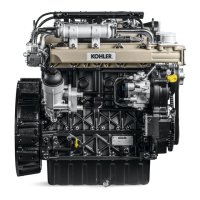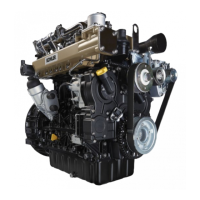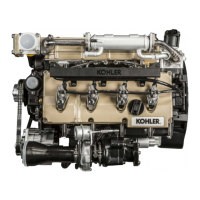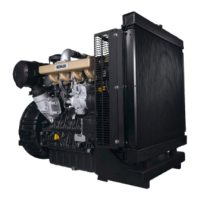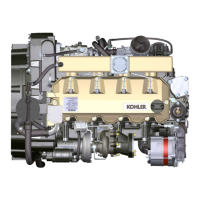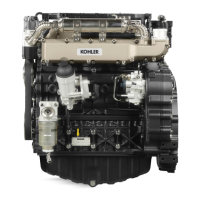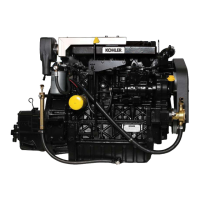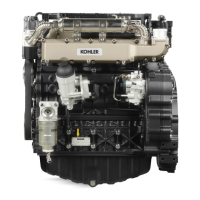TECHNICAL INFORMATION
2
19
EN
•
N (ISO TR 14396 - SAE J1995 - CE 97/68) AUTOMOTIVE RATING CURVE: Intermittent duty a
t
v
ariable speed and load. Engine capacity at intermittent conditions with variable speed and load.
•
MN: = TORQUE RATING CURVE: Also called twisting moment, it is the push generated by the
engine through transmission. The highest engine performance is obtained at the maximum torque.
•
C
=
SPECIFIC CONSUMPTION CURVE:
Engine fuel consumption in a given time at a certain
revolution value. Expressed in g/kW (grams/kilowatt), it expresses fuel yield.
* The above curves express indicative values, in that the overall performance depends on the type of
a
pplication and the ECU control uni.
•
The ratings reported in the diagram regard the run-in engine, fitted with air and exhaust filters, a
t
the atmospheric pressure of 1 Bar and at a room temperature of +20°C
•
Maximum rating is guaranteed with a 5% tolerance.
Warning
•
Non approval by KOHLER for any modification releases the company from liability for damag
e
i
ncurred on the engine.
2.4 Oil
Important
• The engine may be damaged if operated with improper oil level.
• Do not exceed the MAX level because a sudden increase in engine rpm could be caused by its
combustion.
• Use only the recommended oil to ensure adequate protection, efficiency and service life of the engine.
• The use of lubricants other than recommended may shorten the engine life.
• Viscosity must be appropriate to the ambient temperature to which the engine is to be exposed.
Danger
• Prolonged skin contact with the exhausted engine oil can cause cancer of the skin.
• If contact with oil cannot be avoided, thoroughly wash your hands with soap and water as soon as
possible.
• For the exhausted oil disposal, refer to the Par. DISPOSAL and SCRAPPING.
2.4.1 SAE oil classification
• In the SAE classification, oils are identified according to viscosity without considering any other
q
ualitative characteristic.
• The code is composed of two numbers, which indicate, and must correspond to, the ambient
temperature in which the engine operates, the first number refers to the viscosity when cold, for us
e
d
uring winter (" W "), while the second number is for viscosity at high temperatures.
2.2
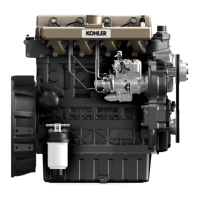
